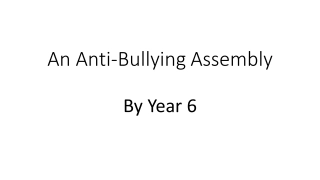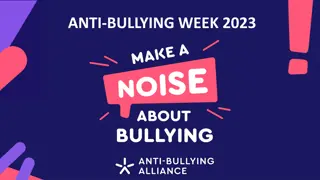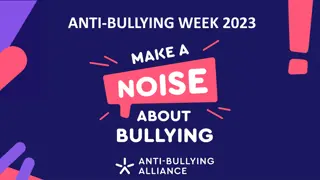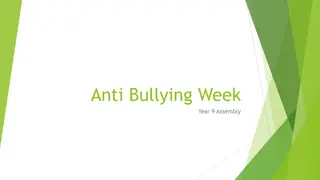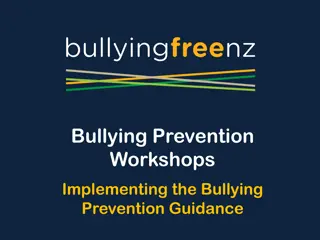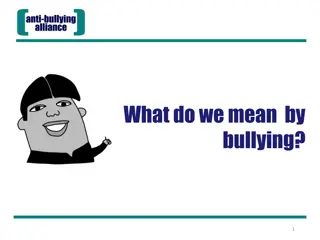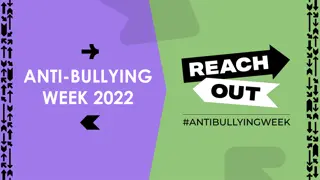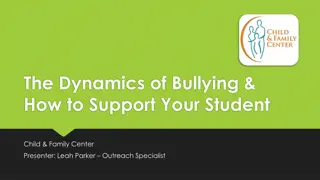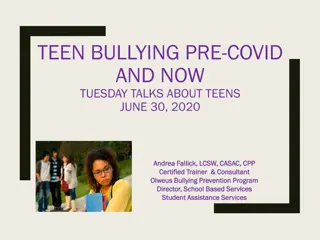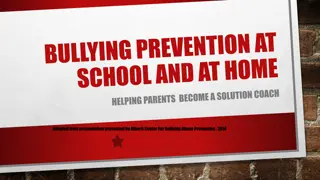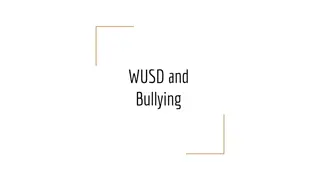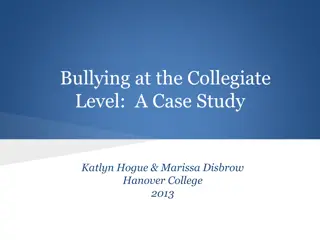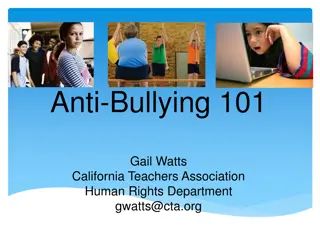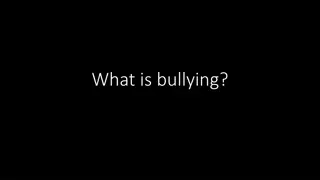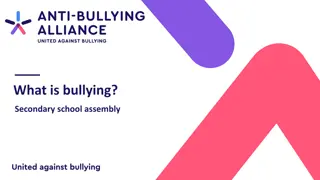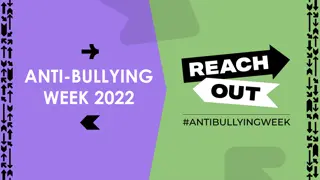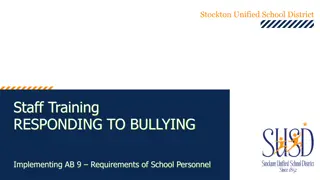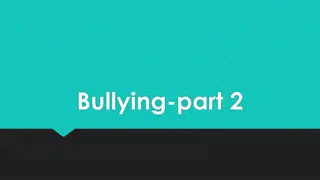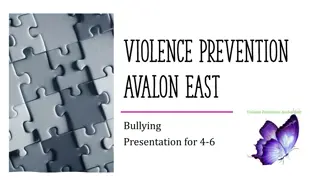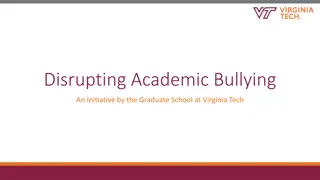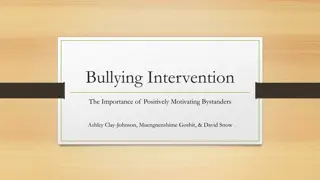Understanding Bullying: The Power of One in Making a Difference
Explore the dynamics of bullying, from the roles of the bully, the bullied, and the bystander to the types and reasons behind bullying. Learn how each individual has the power to make a difference and take action against bullying. Empower yourself with strategies to address bullying effectively and create a safer environment for all.
Download Presentation

Please find below an Image/Link to download the presentation.
The content on the website is provided AS IS for your information and personal use only. It may not be sold, licensed, or shared on other websites without obtaining consent from the author. Download presentation by click this link. If you encounter any issues during the download, it is possible that the publisher has removed the file from their server.
E N D
Presentation Transcript
The Power of One By Mrs. Dawne Gibson One One Nation. One School. One Class. One Person.
One Person CAN make a difference! Be that one person! VIDEO provided by www.YouTube.com
The Bully: 1.Someone who shows aggressive behavior that involves unwanted, negative actions. 2. Bullying involves a pattern of behavior repeated over time. 3. Bullying involves an imbalance of power or strength. The Bullied: 1. One who is bullied by others. 2. The victim of bullying. The Bystander: 1. Somebody who observes, but is not involved in something. 2. A person present but not involved; onlooker; spectator.
Why do people bully? *prejudices *to be powerful *to get attention *they are jealous *to get something *to be cool or popular *they have been bullied *they are underachievers *they don t know how to act correctly
Types of bullying: Physical bullying--includes any physical contact that would hurt or injure a person like hitting, kicking, punching, etc. Verbal bullying-- is name-calling, making offensive remarks, or joking about a person's religion, gender, ethnicity, socioeconomic status, or the way they look. Indirect bullying-- includes spreading rumors or stories about someone, telling others about something that was told to you in private, and excluding others from groups. Cyber-bullying-- is done by sending messages, pictures, or information using electronic media, computers (email & instant messages), or cell phones (text messaging & voicemail). Definitions from Time for Tolerance.
Which type of bullying is this? Who is the bully, the bullied, and the bystander?
What can you do? Speak up Use humor Don t fight back Ask them to stop Show confidence Avoid being alone Tell a trusted adult Follow your instincts Ignore them or walk away Try not to show your emotions http://www.stopbullying.gov/ Our school's website
Rememberthe POWER of ONE! ONE


